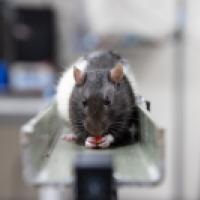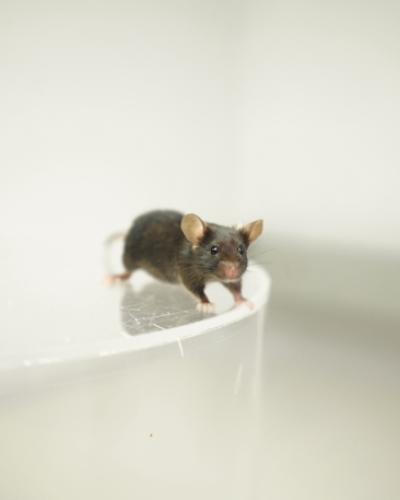Female mice exhibit a strong drive to socialize with other females following periods of acute isolation, significantly increasing their production of social calls that are akin to human emotional vocalizations, new Cornell psychology research finds.
Their behavior suggests a promising pathway, the researchers say, for understanding the brain mechanisms through which isolation affects people’s social motivation and mental health – a growing concern during the COVID-19 pandemic.
“That kind of social interaction between female mice is the most equivalent to our daily interactions with other people,” said Katherine Tschida, assistant professor of psychology in the College of Arts and Sciences. “Intuitively, we know that social isolation has that effect on our behavior: We want to see and interact with people.”
Tschida is the senior author of “Sex- and Context-Dependent Effects of Acute Isolation on Vocal and Non-Vocal Social Behaviors in Mice,” published Sept. 1 in PLOS ONE. First authors are Xin Zhao, a postdoctoral researcher, and Patryk Ziobro and Nicole Pranic, doctoral students in the field of psychology. Co-authors include six undergraduates working in the Tschida Lab: Samantha Chu ’22, Samantha Rabinovich ’22, William Chan ’22, Jennifer Zhao ’22, Caroline Kornbrek ’23 and Zichen He ’22.
The team set out to investigate whether exposure to acute isolation – three days alone in its home cage – would cause mice to increase so-called ultrasonic vocalizations (USVs), as well as non-vocal social behaviors such as sniffing and following, when another mouse was introduced to the cage.
Inaudible to humans, USVs are neither speech nor language, said Tschida, a neuroscientist who studies the brain circuits that control vocalization, but sounds such as laughing, crying and sighing that help indicate and communicate emotional states.
“It’s that kind of innate, emotional type of vocal communication that we produce on top of our learned speech sounds,” Tschida said. “By studying it in a mouse, we think we’ll gain insight into how that process is controlled in people as well.”
The team also looked at whether the number of USVs produced during a social encounter after acute isolation differed among males and females, and at how isolated mice behaved with a mouse of the same or opposite sex during 30-minute encounters – the first study to make such comparisons in mice.
The results were somewhat surprising, Tschida said.
The researchers had expected vocalizations and other activity to increase after acute social isolation. But they observed only subtle changes among males interacting with females – the focus of most prior USV research – as well as among males interacting with other males.
In contrast, female-female interactions showed a “profound effect” from acute isolation: a fourfold increase in USVs compared to a control group of mice kept in group housing, and more non-vocal social behaviors.
“They interact much more, they vocalize much more,” Tschida said, “and the behavior of the subject animal – the lonely mouse, essentially – seems to be altered.”
The scholars speculate that acute isolation may not be enough to significantly influence males’ sexual motivation with females, or aggressive motivation with other males. But it appeared to have a strong effect on the craving for affiliative social contact thought to motivate females’ social interaction.
With one complicating caveat: After emerging from isolation, female mice mounted other females more often, possibly an expression of low-level aggression aimed at establishing social hierarchy, the researchers said.
Confirming that isolation dramatically increased ultrasonic vocalizations between females is valuable, Tschida said, because the brain circuits that control USV production are relatively well understood compared to other social behaviors.
Her lab is now transitioning from behavioral to neural studies of interactions between female mice. The researchers hope to identify neurons that encode social context and emotional states, Tschida said, to pinpoint how isolation acts on the circuits that control social motivation, including vocalizations.
Longer term, that knowledge could contribute to the understanding and treatment of disorders such as anxiety and depression, as well as factors that contribute to individual differences in susceptibility to social isolation.
“You feel lonely, you want to seek out social interaction – what actually causes that at the level of brain circuits?” Tschida said. “Because we have the behavioral output end of it sorted out, that becomes a much more tractable question.”






